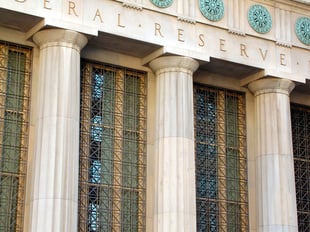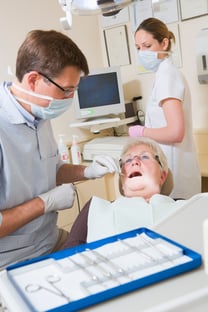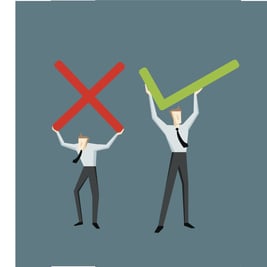 CrossCheck is a 33-year-old payment processing company with tens of thousands of merchants using our services every day. This year, we will clear billions of dollars in check payments, yet we are not a well-known brand outside of our core business clients.
CrossCheck is a 33-year-old payment processing company with tens of thousands of merchants using our services every day. This year, we will clear billions of dollars in check payments, yet we are not a well-known brand outside of our core business clients.
When people ask me about our business model, I tell them that it is all about demographics. This is not what they are expecting to hear, but it usually piques their interest enough to keep listening. By demographics, I mean the distribution of wealth in American society. This is an important topic, but one not typically understood by most Americans, so let me try to explain.
Two thirds of our gross domestic product (GDP) is composed of consumer purchases. Americans love to buy things, and it would be good for everybody if we could keep this up. You don’t have to be an economist to understand the “multiplier effect” of someone making a purchase from a local merchant, who in turn buys goods and services from other local merchants, who in turn buy from other local merchants, etc.
The Ebb and Flow of Economics
Much the same model is in effect in banking where our fractional reserve system creates the money to fund the loans that maintain business functionality. Money is the lubricant that keeps the economy going.
In a macroeconomic sense, we want prices and incomes (and the money supply and availability of credit) to be in some kind of rough equilibrium, so that there is not inflation (too much money chasing, too few goods), or the opposite, deflation. It would also be helpful if we had low unemployment, a balanced budget and a smaller trade deficit.
But it is not a perfect world, and these factors are continually changing in their absolute values and in relation to one another. This is normal and not cause for concern. Yes, there are cycles to the economy; this is normal too. There were 10 recessions between 1948 to 2007, yet our economy still grew at an average annual rate of 3.5% during this period.
"Every 10 years between 1870 and 2007, incomes for each man, woman and child in America rose on average by 21.6%, according to census data and the Madison Project," stated the Wall Street Journal. "This extraordinary achievement is the tangible measure of the extent to which the American dream actually came true. Only twice did that dream falter — in the Great Depression and the Great Recession [of 2007 to 2009]."
We have a very resilient economy — the envy of every other nation — but it would be a mistake to think that the government, or anyone or anything else, can smooth out rough economic cycles and make them disappear. The demographics and distribution of wealth are a continuum in our great land.
Americans Just Getting By
 Recently, the Federal Reserve released its third annual study about how individuals and their families are faring in the economy. One of the most interesting points is that 31% of the population (76 million adults) is either “finding it difficult to get by” or “just getting by.” Furthermore, about 22% of the working population is either working multiple jobs, doing informal work for pay in addition to their main job, or both. As a result, about one-third of American working adults experience fluctuation and instability in their month-to-month income.
Recently, the Federal Reserve released its third annual study about how individuals and their families are faring in the economy. One of the most interesting points is that 31% of the population (76 million adults) is either “finding it difficult to get by” or “just getting by.” Furthermore, about 22% of the working population is either working multiple jobs, doing informal work for pay in addition to their main job, or both. As a result, about one-third of American working adults experience fluctuation and instability in their month-to-month income.
The study also found that nearly half of all adults are ill-prepared for financial disruption and would struggle to cover emergency expenses. About 46% reported they could not cover a $400 emergency expense and would need to sell something or borrow money to cover it.
Unfortunately, a lot of this is related to medical expenses. About 22% of all adults experienced a major unexpected medical expense for which they had to pay out of pocket in the previous year, and almost half of those having a major medical expense reported owing debt from that expense. Data also suggests that about 40% of those who desired credit will face a real or perceived difficulty getting it.
A 2014 Bankrate survey found that only 38% of Americans would cover a $1000 emergency room visit or a $500 car repair from savings. Furthermore, a 2015 study by the Pew Charitable Trust found that 55% of households didn’t have enough liquid savings to replace a month’s worth of lost income. The conclusion is that nearly half of American adults are “financially fragile” or “living very close to the financial edge.” This is pretty scary, not just for those consumers, but for the merchants wanting to sell them goods or services.
Another study conducted by Annamaria Lusardi, Peter Tufano, and Daniel Schneider asked people if they could come up with $2000 within 30 days for an unanticipated expense. The researchers found that roughly 25% could not, and another 19% could do so only if they pawned possessions or took out a payday loan. Their conclusion was that half of American adults are “financially fragile” and “living very close to the financial edge.” This study also found that a quarter of households earning $100,000 to $150,000 per year claim not to be able to raise $2000 in a month. Fully a third of this group, sometimes called “the wealthy hand-to-mouth,” said they felt strained as a result of an economic shock such as a drop in income, medical emergency or major repair.
Now let’s take a look at what typically happens to people when they have a big ticket expense that is not wholly anticipated. By big ticket, I mean anywhere from one thousand up to about five thousand dollars. And for the purposes of this exploration, I will limit these purchases to ones that are typically faced by almost every family every few years.
Auto Purchases
First is the car, the biggest purchase most people ever make unless they are among the 63% of American households owning a home. Buying a car is not really an unanticipated purchase. To the contrary, people dream about getting a new car, or an upgraded used car, for a long time. Sometimes they are waiting to make the last payment on an existing loan or are waiting for a new model to appear. Other times, the old car just has one too many major repair bills and it has worn out its welcome.
The average new car costs $32,000 and the average used car is now about $20,000. In order to qualify for the loan, most lenders require a down payment. Since many consumers don’t have an extra $2000 in their bank account right now, they find themselves in a bind and unable to make the downpayment in one hefty payment. The answer is CrossCheck! But before we get into how we do this, let’s look at two other typical situations: the veterinarian and the dentist’s office.
Dental and Veterinary Expenses
 One study shows that the typical consumer would rather go to the dentist than go through the typical car-buying experience at a dealer, so there is some similarity here. But let’s focus on what happens at the dentist. There is nothing worse than dental pain. You have to go to the dentist right now because the pain is unbearable. But then the big surprise: the dental work will cost $2000 and you don’t have the money in your checking account. What now?
One study shows that the typical consumer would rather go to the dentist than go through the typical car-buying experience at a dealer, so there is some similarity here. But let’s focus on what happens at the dentist. There is nothing worse than dental pain. You have to go to the dentist right now because the pain is unbearable. But then the big surprise: the dental work will cost $2000 and you don’t have the money in your checking account. What now?
Our last example concerns taking your animal to the vet. I recently took my dog in for teeth cleaning. It turned out that the vet discovered that he had a bad tooth that needed extraction. The result: an $800 bill that was totally unexpected. What now?
Well, here is what veterinarians, car repair shops, and dentists typically do in this case. They suggest that the consumer fill out a loan application and apply for another credit card. I am not making this up.
In many cases, this is done with a company called CareCredit. The merchant might tell the consumer that this isn’t going to cost them anything, but this is not really true for most. The reason is simple. If the consumer does not pay the entire debt in full by the short grace period, then they are on the hook for retroactive interest all the way back to the purchase date with rates averaging 20 percent.
Now ask yourself: what is the LAST thing you want to do when you are buying a car, in the dentist’s chair, or listening to the vet explain the bill? Right, the LAST thing you want to do is fill out a credit application, get another credit card, and be on the hook for yet another monthly interest charge that never seems to go away.
Payment Solutions with Multiple Check
 Fortunately, there is CrossCheck. Using our Multiple Check service, the consumer writes two-to-four checks bearing today’s date, and tells the merchant when to deposit them over the next 30 days. The consumer doesn’t fill out a loan application nor do they ever pay interest. Yes, it is that easy.
Fortunately, there is CrossCheck. Using our Multiple Check service, the consumer writes two-to-four checks bearing today’s date, and tells the merchant when to deposit them over the next 30 days. The consumer doesn’t fill out a loan application nor do they ever pay interest. Yes, it is that easy.
If the situation calls for getting the car fixed, going to the vet or funeral home, or simply addressing a home repair, most consumers just need a little help getting through the purchase. Experience tells us that they can transcend such situations if given the time.
This obviously doesn’t apply to all merchants or situations, but it provides tried-and-proven payment solutions for the ones that I mentioned and others including healthcare, building materials, and home furnishings. Since CrossCheck guarantees the checks, the merchant never needs to worry about not getting paid.
For more than 30 years, Multiple Check has been helping merchants make sales that they otherwise would not be able to make, while of course, creating happy customers. Isn’t this what retail therapy is all about? Learn more about payment solutions by downloading our free guide.



